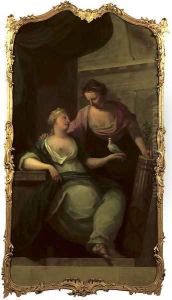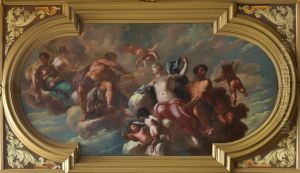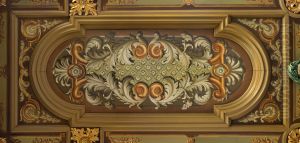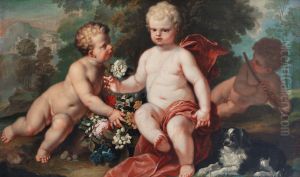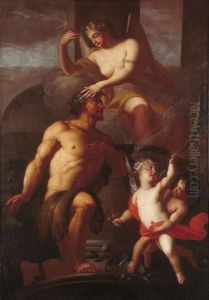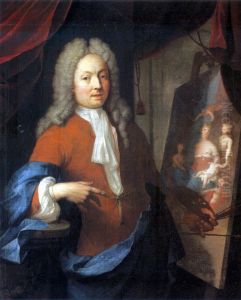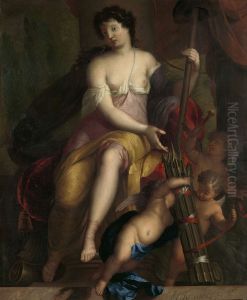Mattheus Terwesten Paintings
Mattheus Terwesten was a distinguished Dutch painter, born on May 8, 1670, in The Hague, Netherlands. He came from an artistic family; his brother Augustinus Terwesten also pursued a career in art. Mattheus's early life was steeped in the cultural milieu of the Dutch Golden Age, a period characterized by great wealth and cultural achievements in the Netherlands, particularly in painting.
Terwesten began his artistic training under the tutelage of his elder brother, Augustinus, who was an established painter in his own right. After this initial period of learning, Mattheus sought to broaden his horizons and refine his skills. He traveled to Italy, which was customary for artists at the time, to study the works of the Renaissance and Baroque masters. This exposure to the Italian masters had a significant influence on his style, which combined the grandeur of Italian art with the detailed realism typical of Dutch painting.
Upon his return to The Hague, Terwesten quickly established himself as a prominent artist. He became known for his historical paintings, allegorical scenes, and portraits, often infused with a sense of drama and grandeur. His work was marked by a strong use of light and shadow (chiaroscuro), elaborate costumes, and careful attention to detail. These attributes made him a favorite among the Dutch elite, who sought his skills for decorating their lavish homes and public buildings.
In addition to his painting, Terwesten was also an esteemed teacher, imparting his knowledge and skills to the next generation of Dutch artists. He was one of the founding members of the Confrerie Pictura, an artist society established in The Hague in 1656, which aimed to promote the interests of local artists and uphold the quality of art in the city.
Mattheus Terwesten continued to work and teach in The Hague until his death on January 6, 1757. His legacy is preserved in the works he left behind, which can be found in various museums and collections in the Netherlands and beyond. Terwesten's contributions to the Dutch artistic tradition have cemented his place as a significant figure in the history of European art.
